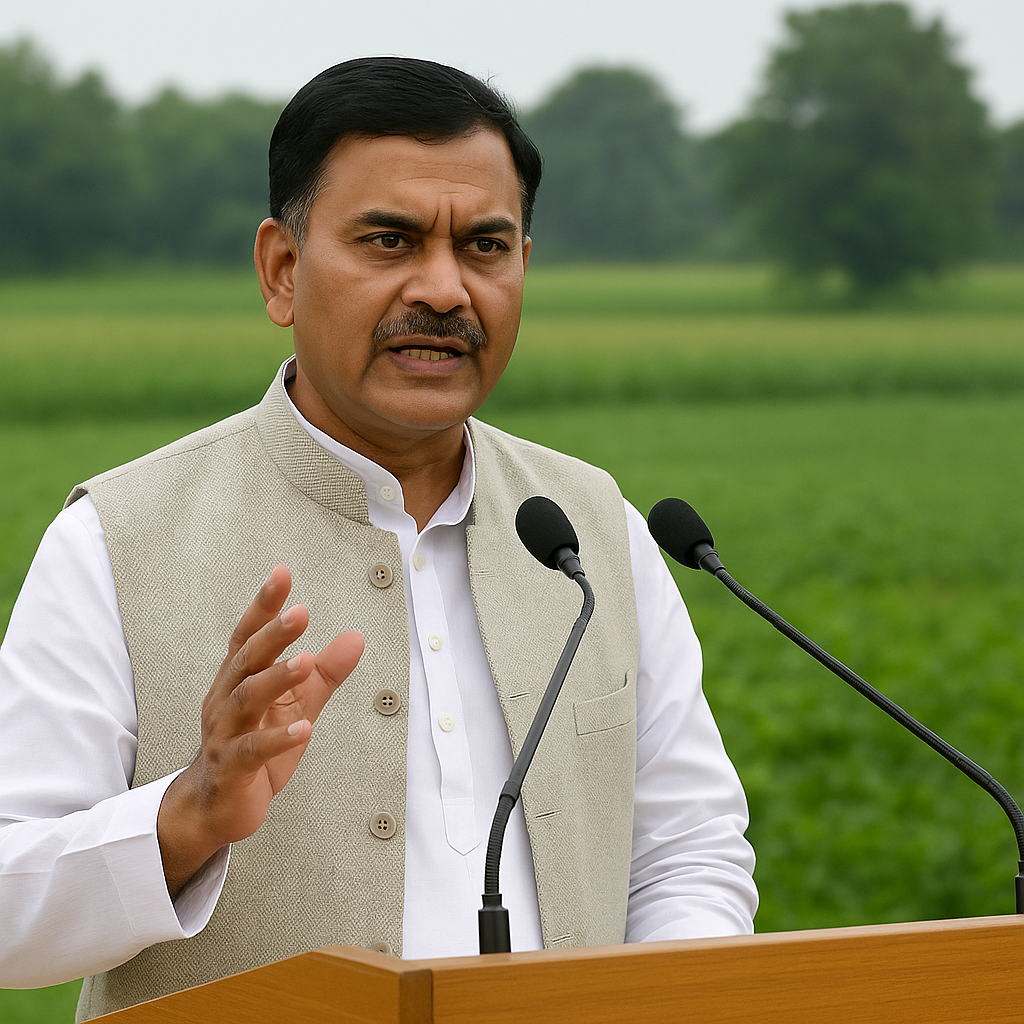Latest News
Agriculture Minister Emphasizes Benefits for Soil & Farmers | Natural Farming Gets Official Backing

The government is committed to encouraging natural farming as a viable and sustainable way for Indian farmers to continue forward, according to the country’s agriculture minister. Natural farming is becoming more popular nationwide as worries about soil health, input prices, and climate change rise. This blog examines the natural farming tenets, state success stories, the policy drive behind this agro-ecological movement, and the relevance of the Minister’s speech. Discover how Indian agriculture is changing at the local level thanks to natural farming.
A Turning Point for Indian Agriculture
In a recent address, India’s Agriculture Minister emphasized that natural farming is not just a technique, but a national movement that can make agriculture sustainable, affordable, and environmentally friendly. As conventional farming struggles with high input costs, pest resistance, and declining soil fertility, natural farming is emerging as a low-cost, high-benefit alternative.

What is Natural Farming?
Natural farming, also known as “Bhartiya Prakritik Krishi Paddhati”, is a chemical-free, agro-ecological farming method that relies on:
-
Locally available inputs (e.g., cow dung and urine)
-
Minimal soil disturbance
-
Crop diversity and intercropping
-
No use of synthetic fertilizers or pesticides
The approach is inspired by the work of Subhash Palekar, who promoted Zero Budget Natural Farming (ZBNF) to reduce farmers’ dependence on external inputs.
Key Components of Natural Farming
-
Jeevamrut: A microbial culture made using cow dung, cow urine, jaggery, pulse flour, and soil. Enhances microbial activity in soil.
-
Beejamrut: Natural seed treatment using cow dung and urine.
-
Mulching: Covering soil with crop residues or biomass to retain moisture and reduce weeds.
-
Whapasa: Maintaining the right balance of air and water in the soil.
Why the Government is Promoting Natural Farming
The Minister’s remarks come at a time when the government is actively promoting natural farming through:
-
PM-PRANAM Yojana: Incentivizes states to reduce chemical fertilizer usage.
-
Paramparagat Krishi Vikas Yojana (PKVY): Supports organic and natural farming clusters.
-
National Mission on Natural Farming (NMNF): Rolled out to spread awareness and build capacity among farmers.
-
Model natural farming villages near the Ganga basin for environmentally safe agriculture.
Advantages of Natural Farming
✅ Low Cost, High Returns
Natural inputs are available on-farm, reducing dependence on costly chemicals.
✅ Soil Health Restoration
Jeevamrut and mulching increase soil fertility and microbial activity.
✅ Resilient to Climate Stress
Crops grown naturally are more resistant to droughts and floods.
✅ Safe for Consumers
No pesticide residue in produce makes it safer for health and exports.
✅ Better for Biodiversity
Natural farming encourages insects, birds, and soil life to thrive.
State-Level Success Stories
🌾 Andhra Pradesh
The state has become a global model with over 7 lakh farmers practicing natural farming under Community Managed Natural Farming (CMNF).
🍋 Himachal Pradesh
Hill farmers are adopting natural farming to grow vegetables and fruits with less water.
🌿 Maharashtra & Gujarat
Farmers in dryland regions are switching to natural farming for cost savings and sustainability.
🍅 Uttar Pradesh
The government is developing natural farming corridors along the Ganga to prevent river pollution from agri-runoff.
Challenges in Scaling Natural Farming
While the benefits are clear, adoption is still limited due to:
-
Lack of awareness and farmer training
-
Limited access to natural inputs in some areas
-
Market linkage for non-certified natural produce
-
Transition time from chemical to natural farming
To overcome this, the Agriculture Minister stressed the need for research, education, and marketing reforms.
What the Minister’s Statement Means for Farmers
By declaring natural farming as the future, the government signals long-term support including:
-
Funding for input preparation units and training centers
-
Creation of Natural Farming FPOs (Farmer Producer Organizations)
-
Integration of natural farming into Krishi Vigyan Kendras (KVKs)
-
Inclusion in agri-curriculum and university research
Conclusion: A National Movement Towards Sustainability
The Agriculture Minister’s call to embrace natural farming is more than a policy direction—it’s an invitation to rebuild Indian agriculture on ecological and cultural foundations. With the right support systems and public awareness, natural farming can not only revive soil and farmer health but also create a resilient, self-reliant rural economy.
FAQs
Q1: According to the Indian government, what is natural farming?
The Indian government promotes natural farming, a chemical-free technique that uses resources derived from Desi cows, as a sustainable farming approach.
Q2: What advantages does natural farming offer?
It produces nutritious, chemical-free food, lowers expenses, and enhances soil health and environmental protection.
Q3: Does the government have any programs that encourage natural farming?
Indeed, programs such as PKVY, PM-PRANAM, and NMNF facilitate awareness campaigns and natural agricultural clusters.
Q4: What distinguishes organic farming from natural farming?
Organic farming frequently incorporates third-party certification and external certification, whereas natural farming employs on-farm inputs and does not.
Q5: Where in India is natural farming most prevalent?
The states with the highest adoption rates are Andhra Pradesh, Himachal Pradesh, Maharashtra, and Uttar Pradesh.















